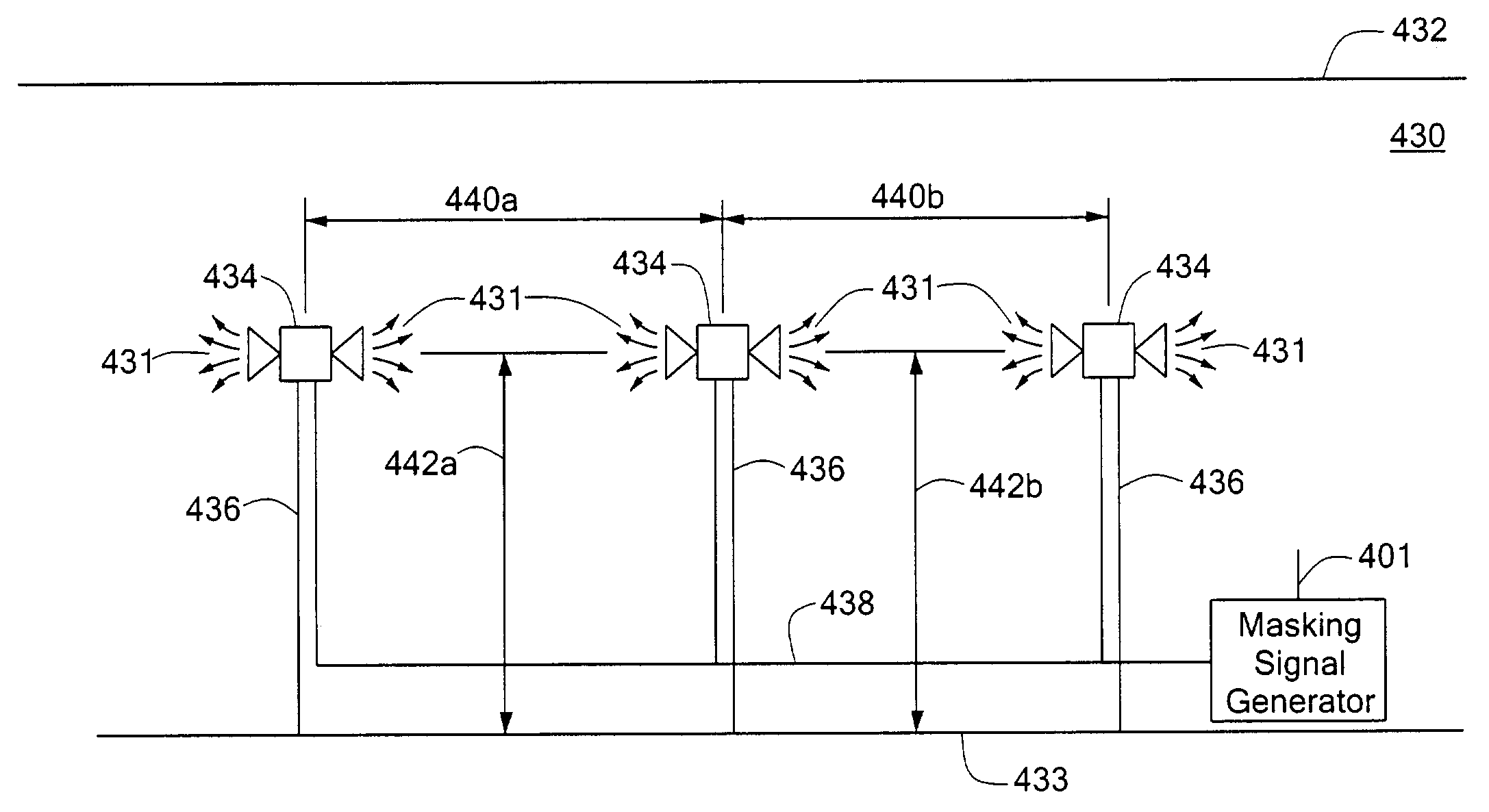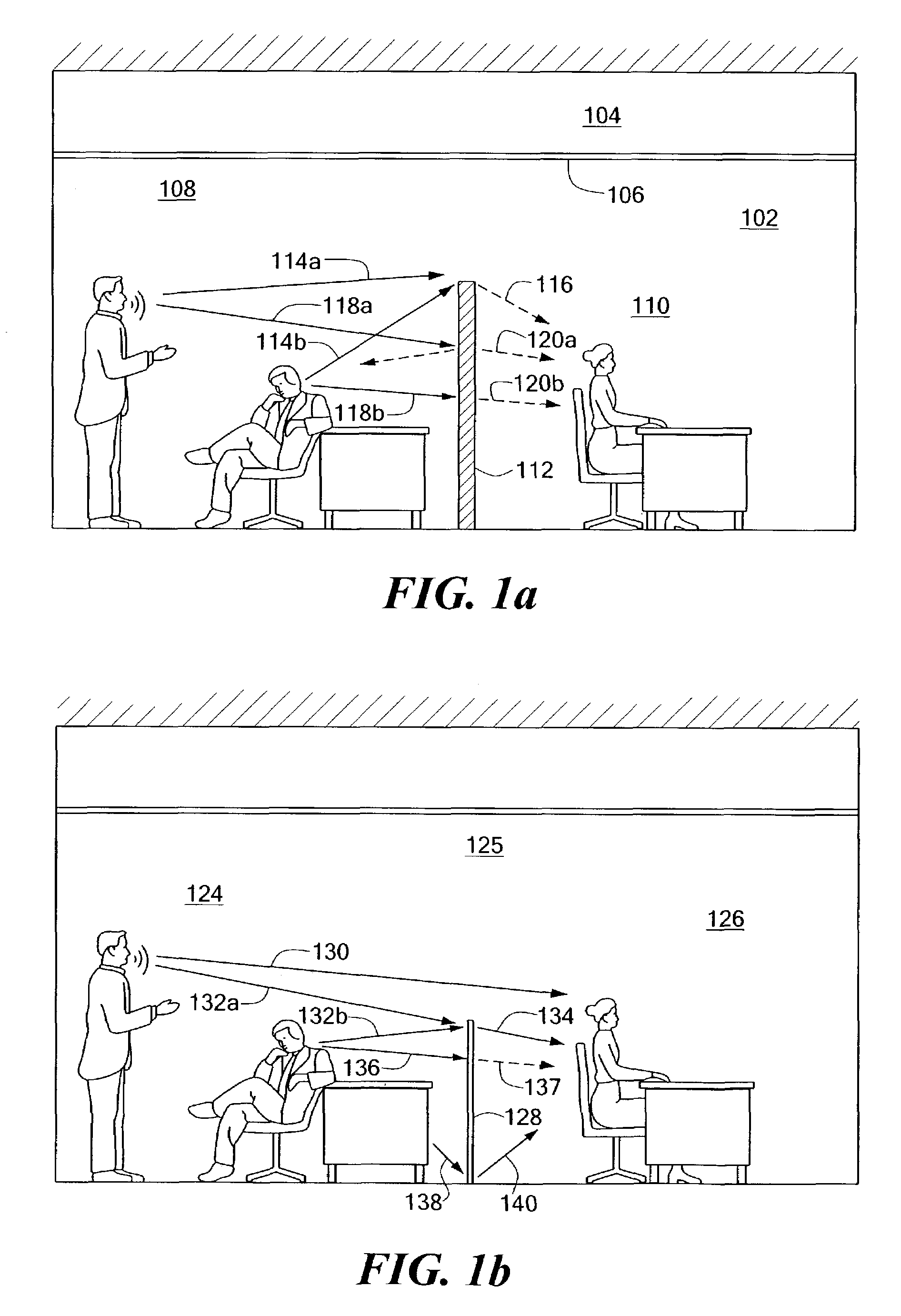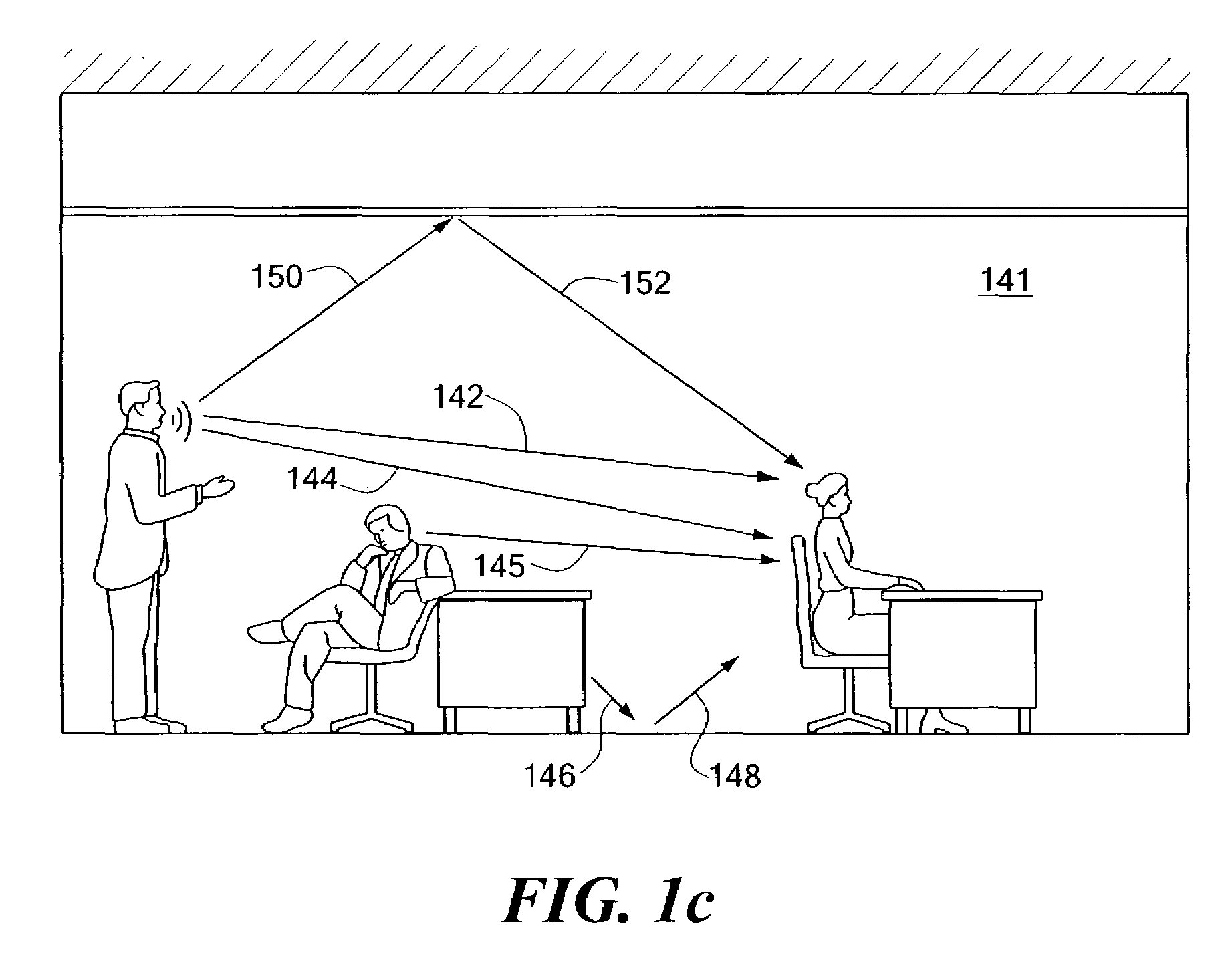Sound masking system
a sound masking and sound technology, applied in the field of sound masking systems, can solve the problems of unwanted speech of a talker in a nearby workstation area readily transmitted to unintended listeners in nearby workstation areas, easily becomes a source of annoyance itself, and the volume of the masking sound must be a relatively high intensity, so as to achieve superior sound masking and low directivity index
- Summary
- Abstract
- Description
- Claims
- Application Information
AI Technical Summary
Problems solved by technology
Method used
Image
Examples
Embodiment Construction
[0036]In a sound masking system according to the invention, one or more sound masking loudspeaker assemblies are coupled to one or more electronic sound masking signal generators. The loudspeaker assemblies in the system of the invention have a low directivity index and, preferably, emit an acoustic sound masking signal that has a sound masking spectrum specifically designed to provide superior sound masking in an open plan office. Each of the plurality of loudspeaker assemblies is oriented to provide the acoustic sound masking signal in a direct path into the predetermined area in which masking sound is needed. In addition, the sound masking system of the invention can include a remote control function by which a user can select one of a plurality of stored sets of information for providing from a recipient loudspeaker assembly an acoustic sound masking signal having a selected sound masking spectrum stored in the sound masking signal generator. One of the stored plurality of sets ...
PUM
 Login to View More
Login to View More Abstract
Description
Claims
Application Information
 Login to View More
Login to View More - R&D
- Intellectual Property
- Life Sciences
- Materials
- Tech Scout
- Unparalleled Data Quality
- Higher Quality Content
- 60% Fewer Hallucinations
Browse by: Latest US Patents, China's latest patents, Technical Efficacy Thesaurus, Application Domain, Technology Topic, Popular Technical Reports.
© 2025 PatSnap. All rights reserved.Legal|Privacy policy|Modern Slavery Act Transparency Statement|Sitemap|About US| Contact US: help@patsnap.com



